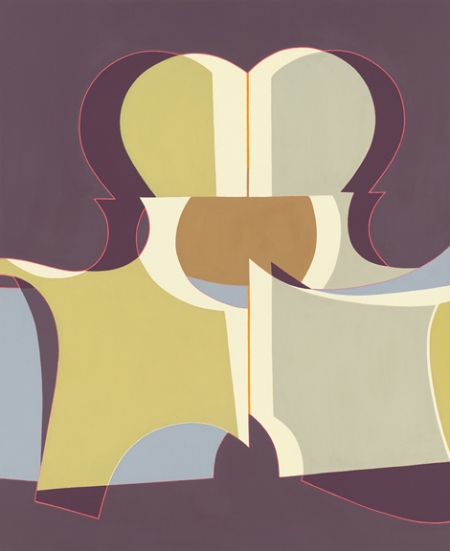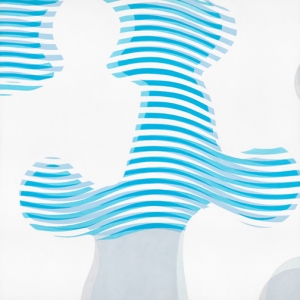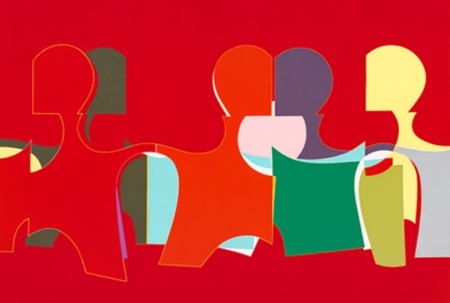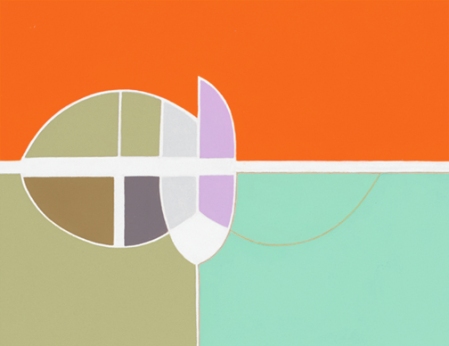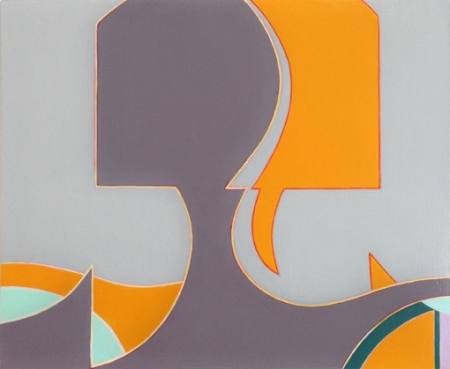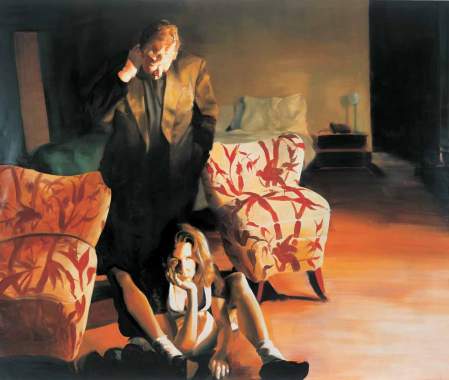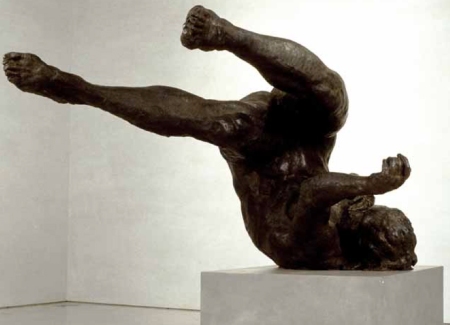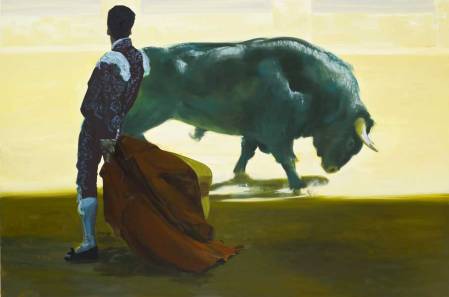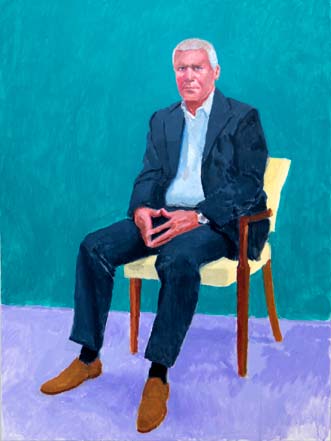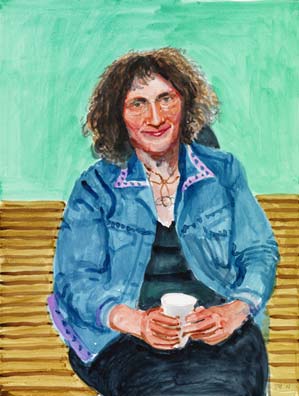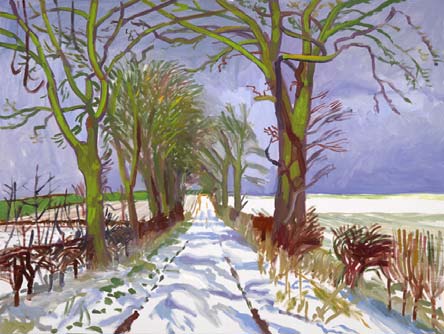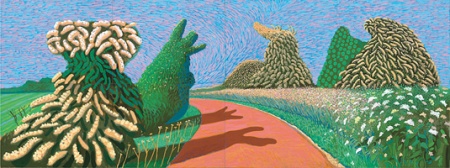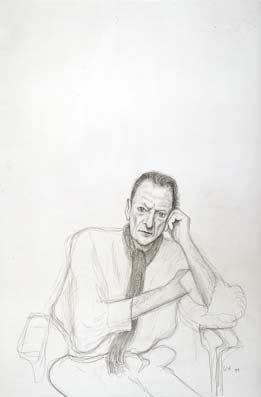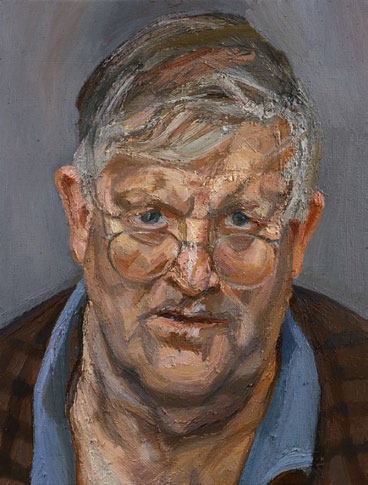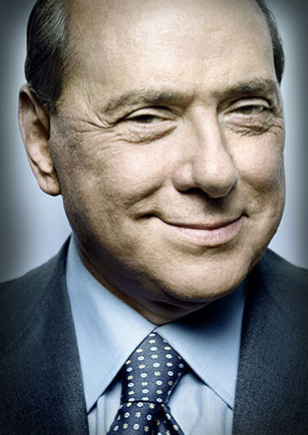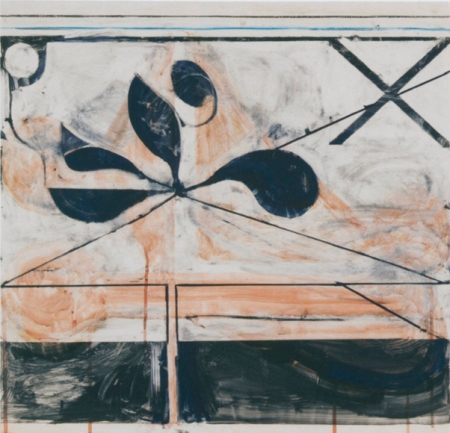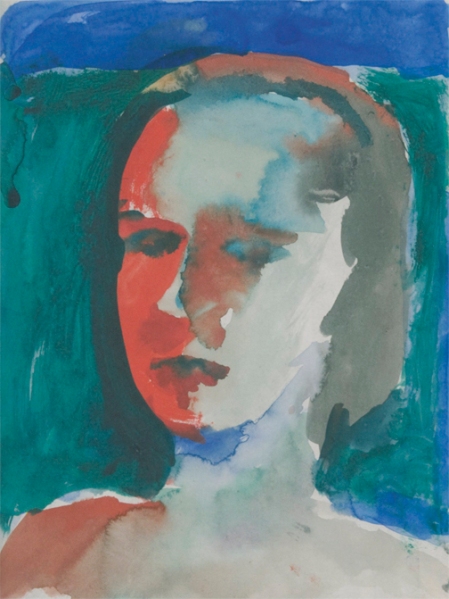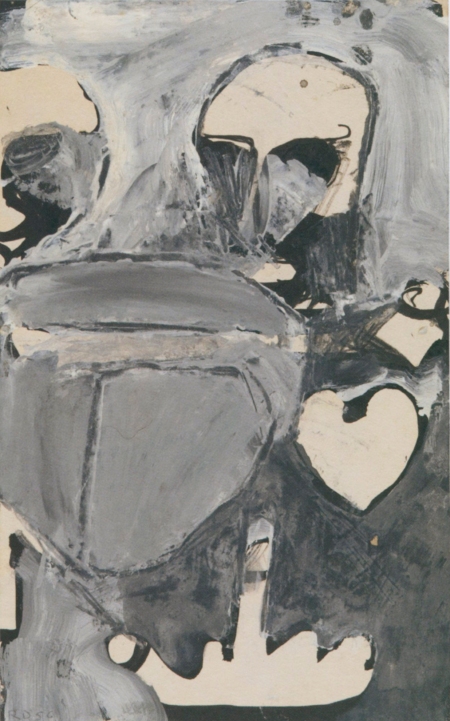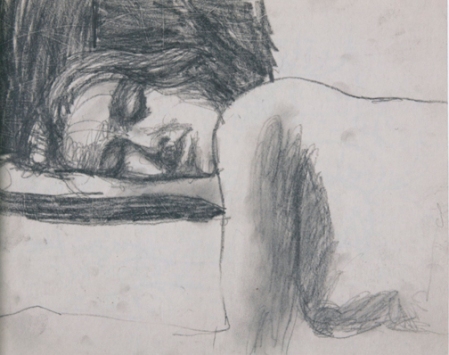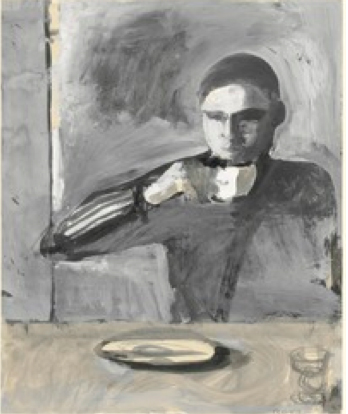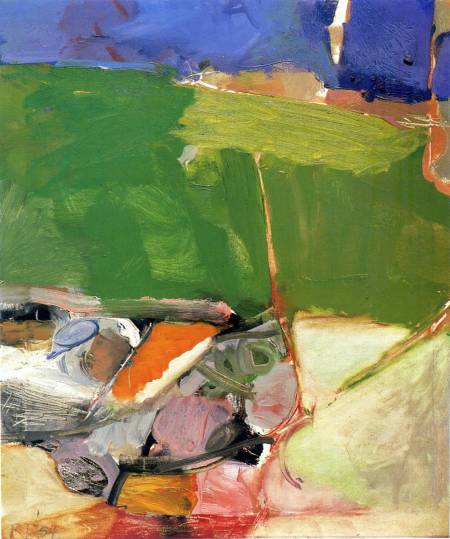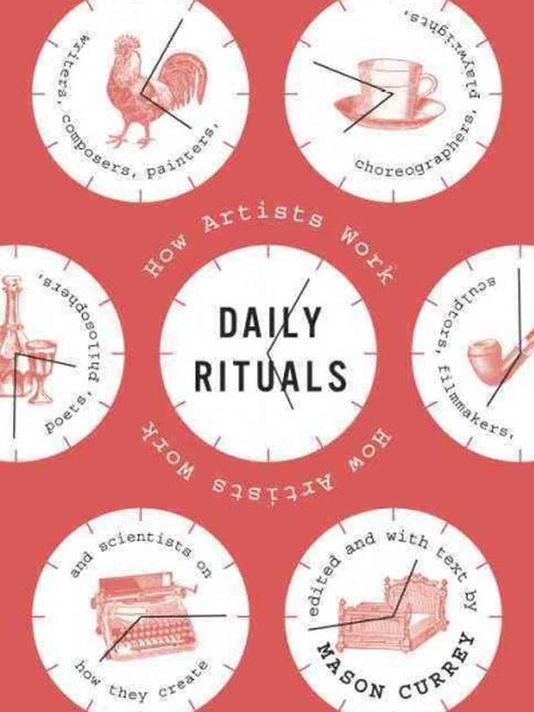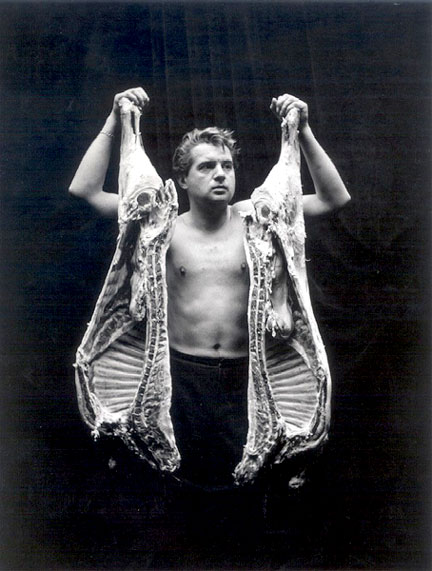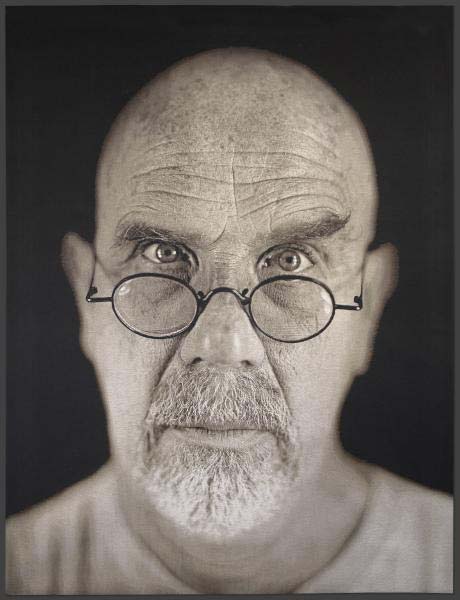VENETIAN RED is no longer publishing. Posts can now be viewed on FIGURATIVELY SPEAKING.
Venetian Red is no longer publishing
Posted in Fine & Decorative Arts on August 15, 2016 by Liz HagerVENETIAN RED is no longer publishing. Posts can now be viewed on FIGURATIVELY SPEAKING.
Color in Motion: Michele Sudduth at SFMOMA Artists Gallery
Posted in Artists Speak, Bay Area Art Scene, Contemporary Art, Female Artists, Fine & Decorative Arts, Liz Hager, Painting with tags Abstract Art, acrylic painting, Bay Area artists, Female Artists, Michele Sudduth, SFMOMA on June 4, 2014 by Liz HagerBy LIZ HAGER
© Liz Hager, 2014. All Rights Reserved
Editor’s Note: Michele Sudduth‘s exhibit of new large and smaller scale paintings opens this Saturday at SFMOMA’s Artists Gallery. Late last month Venetian Red previewed the work. Excerpts of our interview with the artist follow.
Venetian Red: Iʼm curious about the origin of this new work and how it evolved.
Michele Sudduth: It actually started about ten years ago with the painting Blue Shift, when I projected the image of a jigsaw puzzle piece over a striped painting and noticed the sense of movement that was created when I shifted the stripes against the puzzle image.
But what also fascinated me was the humanizing aspect of the puzzle image. Over the years I’ve played with that and, most recently, I extracted one single image out of a series of puzzle paintings and used that for this latest body of work. This new work is rather figurative, but it’s also rather techno too, somewhere between figurative and architectural, which I like.
VR: Did particular ideas or themes emerge as this new work evolved?
MS: This work has evolved a lot. One of the themes Iʼve consistently experimented with is making artwork that is difficult to focus on, not because thatʼs interesting in itself, but because of the movement aspect of it. Additionally, we’re always because we are always being told to look at specific things in society and quite often they turn out to be the wrong things. Beyond that, our individual perspective changes all the time, or at least mine does, whether this is a parallax thing because of the angle of viewing or just because my mind changes, or I’m feeling differently or I have new information. So for a long time Iʼve questioned the validity of having a viewpoint at all. Iʼve certainly questioned it in terms of the artwork that I make; I don’t want to root the viewer to any one particular perspective. So Iʼve been thinking about this as a kaleidoscopic perspective, where we have bits and pieces of views that overlap and coincide and keep changing. Thatʼs what Mission Boogie is for me.
VR: How does the notion of kaleidoscopic perspective play out in the current work?
MS: I think the kaleidoscopic perspective is there in the current work but itʼs taken me a long time to see it and to become comfortable with the imagery in the new paintings. Itʼs perhaps because three years ago, a group of us set out to purchase our studio building in the Mission District. In that very challenging process with all its visceral social interactions I found that I had to move beyond my attachment to who I thought I was. Ultimately we triumphed. But the process of accommodating all of our different perspectives, fears, and hopes not only changed me personally but might also have been the genesis of what feels like a more overtly social expression in my recent paintings.
The puzzle piece can certainly be read as a figurative element and thus hints at narrative but I prefer to think of it as symbolic rather than narrative. What I can now see as consistent with my earlier work is the rhythm, repetition and movement of a world in which different views co-exist, none more important than the other, and all changing in the next second.
VR: It seems to me that color is a primary way your paintings reach out to their audience. What is the role of color in your work?
MS: Color is a real challenge for me and I work very hard at it and sometimes it flows but most of the time Iʼm sort of toughing it out, trying to figure out what’s going to work. I believe Brigit Riley once said that color is the most irrational aspect of painting and thatʼs certainly true for me.
VR: And yet the results look so intuitive, so effortless. It seems like you live easily in the world of color relationships.
MS: For me in terms of resolving a piece of work—even though I’m not sure I like the idea resolution—I always want it to have a lightness and a sense of inevitability. So I think that might be what youʼre thinking of when you say the color looks effortless. I want it to look that way. I want it to look like it just happened that way and thereʼs absolutely no other way it could possibly be. In terms of color, London Bus began much differently than it ended. I conceived of the figures on a strong yellow background but that ground evolved through yellow, various oranges and reds to the final red, which now feels to me as though it was always meant to be that way.
VR: Can you say more about your painting process? I feel there is more to discuss about the notion you raised earlier of “toughing it out,” to get to what looks like a very natural place.
MS: Toughing it out actually doesnʼt describe it, because sometimes I just have to relax and be easy with it but other times I find I have to push very hard. It just depends on the painting. For example, these two little new paintings, both studies, have both been lifted out of existing paintings. The first one, Mod Fish, came very easily and quickly. I worked it out on the computer and got close to the colors I wanted, which is typically how I work. But I can never translate color directly from the digital image to paint, because paint is such a different medium—the way light strikes it is different and of course scale changes everything. But this painting came easily and the colors are quite similar to my original computer sketch.
The second painting has been much more challenging. I extracted this image from London Bus, thinking I would experiment with a red-on-red painting, but I havenʼt been able to get it to work at this scale and on a hard panel. So, Iʼve been thinking about the relationship between composition and color. Even though I work out a composition on the computer and then project it onto the canvas and spend a lot of time refining it—smoothing the lines and making sure the intersections work—the final resolution is actually driven by color. With this painting I donʼt want to literally change the composition, so Iʼve been experimenting with how to change it with color, changing the weight and relationships of various components through color. Iʼm always looking for color that surprises me.
VR: In general, the exuberance of the work is largely due I think to the kind of rhythmic movement and buoyant color schemes you employ. The paintings really sing.
MS: Yes, I am very much an optimist. I donʼt need to be shown problems; I want to make art that speaks to solutions. In the end, all I can do is make a truthful painting, truthful to what the painting tells me it needs.
The Rabbit Hole
The Eye’s Mind: Bridget Riley – Collected Writings 1965-2009
Josef Albers Foundation
Interaction of Color: 50th Anniversary Edition
Jenifer Kobylarz
VR Bookshelf: Eric Fischl’s Bad Boy
Posted in Artists Speak, Book Review, Contemporary Art, Fine & Decorative Arts, Liz Hager, Painting with tags Eric Fischl, Julian Schnabel, Mary Boone, narrative painting on December 17, 2013 by Liz HagerBy LIZ HAGER
© Liz Hager, 2013. All Rights Reserved
Working toward that moment—what painters call the frozen moment—led me to a new way of narrative painting. Painting is about trying to get to that instant that is pregnant with some special kind of energy. Done right, there’s an exquisite tension in the painting that comes from a precise set of relationships—between forms on an abstract level and between people on an image level. Finding where to arrest the action, where to stop time, is where artistry lives. The most dramatic moments are the moments just before or just after something happens. The viewer entering the scene at those moments rushes to complete the narrative with his or her own associations and feelings.
—Eric Fischl, Bad Boy: My Life On and Off the Canvas
I remember when Eric Fischl first burst on the New York art scene at Mary Boone’s gallery in the early 80s. It was shortly after Julian Schnabel debuted his gimmicky broken plate paintings, which demonstrated the kind of vice grip conceptual art and non-traditional materials had on the art world at the time. By the early 80s plenty of pundits had arrogantly proclaimed painting “dead.” As if!
True, abstract painters—Bryce Marden and Elizabeth Murray come to mind—steadfastly carried a dim torch through those dark years. If the body abstract painting was anemic, the corpse of narrative painting was buried in a tightly sealed crypt, its coffin nailed by pretty much every modern art movement since Impressionism.
In 1982, it was hard to tell whether Fischl’s was a refreshing jolt of energy to the increasingly abstruse art world or just recklessly inane.

Eric Fischl—Bad Boy, 1981
Oil on cavas, 66″ by 96″
(courtesy Mary Boone Gallery)
You know how this story plays out. Fischl stuck with his vision. Reports of painting’s demise were greatly exaggerated. During the last two decades of the 20th century, painting resurfaced with a vengeance. Resuscitated by painters like Fischl, Odd Nerdrum, Jack Beal, Alfred Leslie and others, narrative painting has been awakened from its century-long sleep.
Both memoir and manifesto, Bad Boy is a riveting read. We know the end of the story, but getting there is fun reading. Fischl knows his share of celebrities and luminaries and many of them have contributed their own memories of the artist to the book. Everyone loves a snipe or two and Fischl proves he is not beyond snarky remarks, though not enough of them to make the book a dreary gripe. I suppose all memoirists must “Povich-ize.”
While the memoir bits were engaging, I devoured the passages in Bad Boy devoted to the painting process and Fischl’s artistic philosophy.
In particular, this passage describing the magic that is artistic “brilliance”:
To translate vision artist uses materials that are, for lack of a better word, alchemical. Paint, for example, has this wonderful, mysterious quality—a smell and a sensuous, velvety feel an inability to hold color and light long—that unlocks and speeds up one’s creative metabolism. Paint captures my every impulse—from my broadest conceptions to the tiniest text and tremors of my wrist.
Not every image comes to life. In fact, very few do. Often my resistance is too strong. I grip my brush too tightly. Or risk too much. But then there have been those moments when I’ve felt as if I’ve broken through. Like when I made the violent swipe of white primer in the “Bed” painting. Or realized that the action in sleepwalker was taking place at night. Or that the 11 year old in Bad Boy was stealing from the woman’s purse. These moments are not the result of genius for any kind of rational intelligence. They’re more like flashes of epiphany, a desperate surrender to voices from within, usually after I’ve exhausted every other option.
And, if I had a dollar for every artist who claims what Fischl refutes here, well then…
…The notion that artists make art only for themselves I reject totally. It is kind of bullshit an artist tells himself when he is in his studio alone. Of course he wants to see himself in his own work, but that is not what he hopes will be the end result. He is looking for other people who will see their selves in his work. Artist create art because they are seeking resonance for their thoughts and feelings. They are seeking connection. Any artist who tells you otherwise also believes that and an astronaut goes to the moon only to satisfy his own curiosity…
Fischl occasionally ascends to macro heights in Bad Boy:
The further art got away from the tradition of telling and retelling our dreams, reinvigorating our understanding of what it means to be human, what it means to us to be alive, the more it relinquished its central primacy in the culture. As artists focused on their own uniqueness, either as an idealization or as an existential tragedy, the language of art became more and more arcane, more private, and now can no longer claim to serve society the way it once did. Art is cultural glue. It binds us to each other by revealing what it is we share, what we have in common on the most intimate levels of our being. But in order for art to work, an audience has to be able to see themselves represented in the artist’s creation…
And every once in a while to the stratospher. This passage sounds absurdly grandiose out of context, but trust me, it works:
To rehabilitate the importance of the body in art, we have to come to terms with sex and with death. We have to come to terms with mortality, with how the body ages, with how are relationship to our needs and our fantasies in our dreams changes, with how our body deteriorates. We have to figure out what it means to die.
The Rabbit Hole
Here’s The Thing: Alec Baldwin interviews Eric Fischl
Dive Deep: Eric Fischl and the Process of Painting;
Eric Fischl: 1970-2000
Continuous narrative works—Trajan’s Column; Bayeaux Tapestry
Paul Barolsky—“There is No Such Thing as Narrative Art”
James Elkins—“Time & Narrative”
An Illustrated Dictionary of Narrative Painting
Hyperallergic: Painting on the Cusp (Abstraction in the 1980s)
The Road Through Woldgate Woods: David Hockney at The deYoung
Posted in Bay Area Art Scene, Contemporary Art, Digital, Drawing, Fine & Decorative Arts, Liz Hager, Painting with tags A Bigger Exhibition, Brothers Grimm, David Hockney, de Young Museum, iPad drawing, Six Fairy Tales on October 26, 2013 by Liz HagerBy LIZ HAGER
© Liz Hager, 2013. All Rights Reserved
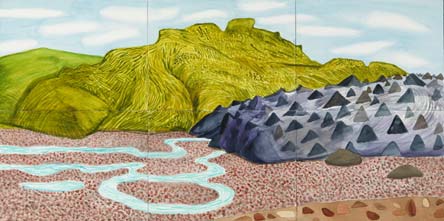
David Hockney,The Black Glacier, 2002
Watercolor on 6 sheets of paper (18 x 24″ each)
36 x 72″ overall
Six Fairy Tales, David Hockney’s pictorial interpretation of The Brothers Grimm, was my introduction to the artist in the late 70s. Rather than portray moments of narrative action, Hockney chose to focus on the characters and their environments. While telegraphing Hockney’s signature (and enduring) interest in places, people and certain still-life subjects, these etchings quietly enrolled me into Hockney’s view of the world—equal parts familiar, banal, whimsical, amusing, beautiful, sweet, ugly, and, sometimes, just a bit deliciously sinister.
Relentless exuberance might be the best way to describe the Hockney on view in “A Bigger Exhibition,” the de Young’s current extravaganza. The show, aptly named on many levels, features 18,000 square feet of Hockney—some 398 works. Of that number 78 were completed in this year alone, a testament to the artist’s prodigious work habits. The show displays quite a number of huge pieces, constructed, as are his videos, in grids of smaller canvases. Plein air landscapes of his beloved East Yorkshire countryside and portraits of his friends comprise the bulk of the exhibition, though it includes other pieces, including most interestingly The Great Wall.

David Hockney at the deYoung for press preview
The exhibition spans work completed in 1999 to portraits finished this month, though 2002 might be the most important milestone. This was the year Hockney returned to painting after a multi-year investigation of the use by Renaissance artists of the camera lucida, which culminated in the release of the fascinating and controversial Secret Knowledge.
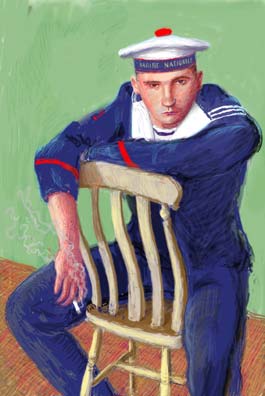
David Hockney. A Bigger Matelot Kevin Druez 2, 2009
Inkjet printed computer drawing on paper,
mounted on Dibond
63 7/8 x 42 7/8″
Hockney facilely creates in a variety of visual media, including iPad software and video. With the digital installation room the museum’s curators have accomplished a miraculous feat—people lingered, seeming to view works for longer than the all-too-common 30 second scan. (Although on a recent visit there was still a lot of shutter snapping. Hello, would you please put your iPhone away and just really look for a moment?)
Color is Hockney’s seductive Siren, and she is both an asset and a liability. Taken as individual compositions, the bright saturated colors delight. Hockney Woods is a cheery place full of daringly-deployed “tube” greens mixed to a wide range of tints and shades. Hockney uses the complementary antidote, magenta, in just the right amount to soothe those highly-agitated greens. This palette does not replicate the lush Yorkshire countryside so much as symbolize it. You won’t probably recognize this as England. With a color subconscious permanently colonized by Los Angeles, the road to Woldgate Woods runs through Santa Monica.
En mass Hockney’s saturated colors have a different effect. A room of huge paintings have the power to overwhelm. I quit one gallery with a brain stimulated into nervous excitation.
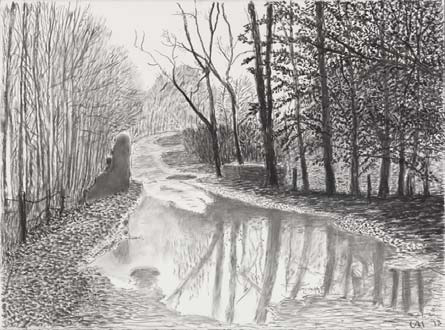
David Hockney, Woldgate, 6-7 February, from ‘The Arrival of
Spring in 2013′
Charcoal on paper, 22 5/8 x 30 1/4″
Good thing then that “A Bigger Exhibition” contains crannies of calming black and white drawings. These oases also serve to demonstrate the fundamental role drawing has always had in Hockney’s art. “Drawing is an ancient thing,” he wryly observed at Wednesday’s press preview. “So why were they saying we’ll give it up? After 30,000 years, why would we do that?”
I will be back to study more carefully all the landscape drawings and his 2000 portraits of National Gallery guards. (These among the very few portraits Hockney produced of people he didn’t know; just like his inspiration Ingres, Hockney invited them to tea first to get to know them.)
Beyond color, what is striking about the work on display is Hockney’s attention to mark making and decorative pattern. The spirit of Rousseau is unavoidably invoked in some of the more densely foliated landscapes. In certain instances of mark making Hockney may even have out-Van Goghed van Gogh.
One viewing of “A Bigger Exhibition” was barely sufficient to get a lay of the land, nevermind formulate a concrete sense of all the things this vast amount of work says about the artist. I will be back to the de Young in the coming weeks. Nevertheless, I can’t help but wonder whether this show would have been aided by some judicious editing to create a tighter view of the artist. We’ll soon know whether “A Bigger Exhibition” makes new Hockney fans or looses all but the most stalwart of existing fans.
The Rabbit Hole
David Hockney
Intelligent Life—“Brushes With Hockney”
Video: Hockney sketchbooks
Hockney’s multi-camera landscape video
From the VR Archives: Lay of the Land
Posted in Bay Area Art Scene, Contemporary Art, Fine & Decorative Arts, Liz Hager, Painting, People & Places, Photography, Politics with tags Art, Canadian artists, David Milne, Landscape art, Painting, Patrick Dougherty, Photography, Platon, San Francisco, Silvio Berlusconi on September 27, 2013 by Liz HagerBy LIZ HAGER
© Liz Hager, 2013. All Rights Reserved
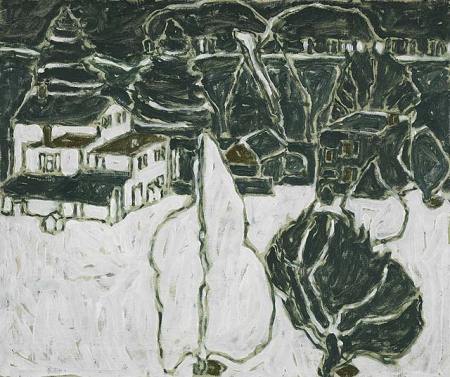
David Milne, Black and White Trees and Buildings, 1915/6
Oil on canvas, 51.5 x 61.5 cm
National Gallery of Canada, Ottawa
Reading landscape painter Ian Robert’s Creative Authenticity reminded me of our post on David Milne, little known I fear outside Canada. Northern Exposure: The Landscapes of David Milne.

Patrick Dougherty, Upper Crust, 2009,
Willow branches,
Joseph L. Alioto Performing Arts Piazza, San Francisco
That led me to VR coverage of Patrick Dougherty’s Upper Crust, fanciful organic site structures, staged in the Civic Center’s Aliota Piazza: Patrick Dougherty in San Francisco.
And finally to the political landscape and Platon’s photographic portraits of world leaders: Eye of the Beholder: Platon’s Portraits of Power.”
Venetian Red Bookshelf: Unpublished Diebenkorn
Posted in Bay Area Art Scene, Book Review, Contemporary Art, Drawing, Fine & Decorative Arts, Liz Hager, Painting with tags College of Marin, Kelly's Cove Press, Richard Diebenkorn, San Francisco Bay Area, Squeek Carnath, The Intimate Diebenkorn, William Wiley on July 30, 2013 by Liz HagerBy LIZ HAGER
© Liz Hager, 2013. All Rights Reserved
Editor’s Note: See our companion piece,“Rambling Through Diebenkorn Country”
There is nothing I cannot paint over. —Richard Diebenkorn (from Temperaments: Artists Facing Their Work
)
For many reasons works on paper can offer a more intimate viewing experience than their cousins on canvas. This is partially due to the fugitive nature of drawing materials—handmade papers, graphite, charcoal, gouache—which often keep works on paper in storage. When they are displayed, their relatively smaller sizes and their display under glass, compel the viewer to lean in to works on paper, thereby creating an exclusive relationship that shuts out the distractions of the world beyond. Further, an artist often works out his or her ideas on paper before moving to more expensive canvas. Many works on paper were never meant by the artist be seen publicly. But when they do see the light of day, collections of this kind of work can provide an exhilarating peek behind the curtain of the creative process.
Such was the case for me at the current retrospective of Diebenkorn’s Berkeley years at the de Young.

Now I have even more reasons to be cheerful, where Diebenkorn’s process is concerned. A writer friend recently sent me two exquisite visual monographs on the painter—Abstractions on Paper and From the Model. newly published by Kelly’s Cover Press. to accompany the exhibit “The Intimate Diebenkorn: Works on Paper, 1949-1992,” which opens in September at the College of Marin Fine Arts Gallery.
What’s immediately notable about these volumes is they contain largely unpublished work, “unknown” Diebenkorns, all works on paper.
The format of these volumes is a refreshingly departure from the expected catalog of artistic work. At 6 x 8″ and around 125 pages, each of these volumes can be held in the hand, put into a pocket for easy transport, pulled out to consult. Like the works on paper they reproduce these books offer an intimate and spontaneous experience.
The production value of these volumes is indistinguishable from a first-rate catalog, i.e. ample page-sized reproductions with great detail, good color veracity, coated paper stock. What a pleasure it is to have something such a beautiful book in your hand (and not anchored on a bookshelf or table)!
Kelly’s Cove Press has broken with another time-honored art publication tradition. Other than a few quotes from Diebenkorn and a biography, these volumes contain no commentary. We are free to form our own interpretations of the work, unencumbered by the flights of grandiose and sometimes tedious rhetoric that often accompany exhibit catalogs.
The volumes were conceived by editor Bart Schneider with the help of Bay Area painter Chester Arnold. I had occasion recently to discuss the project with Schneider.
VR: How did this project originate?
I’ve long been a Diebenkorn fan and in the 90s, I chose one of his paintings Large Still Life, 1966, which is featured prominently in the De Young show, for the cover of a magazine I then edited, Hungry Mind Review.
Richard Diebenkorn, Untitled, 1956
Gouache and ink on paper mounted on cardboard
© The Richard Diebenkorn FoundationI happily blundered onto the treasures held by the Richard Diebenkorn Foundation, when I approached them last year about using some of his figure drawings for a book we published last fall, Poses, by Genine Lentine. When I learned that roughly 4,000 of the 5,000 known works by RD were on paper, I approached the foundation about doing a book of his works on paper in advance of the show at the De Young. Once I saw the vastness and glory of the Foundation’s collection, I realized it needed to be two books.
VR: Why this particular format?
My goal is to make a more casual style art book, with which viewers can have a more intimate experience of the artist’s work. That means small books you hold easily in your hands, or take to bed with you. Also, I like the idea of having very little text to mediate the direct experience between artist and viewer. And if you can make the books so they only cost $20, you have a chance of getting them into a lot of people’s hands. I’d like people who pick up these volumes to have the experience of walking into a gallery and discovering work they didn’t know.
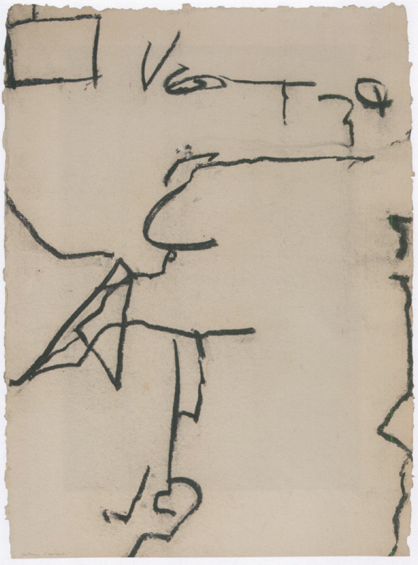
Richard Diebenkorn, Untitled, c. 1988-92
Charcoal on handmade “Hawthorne of Larroque” paper
© The RIchard Diebenkorn Foundation
VR: What’s next from Kelly’s Cove Press?
I enjoy exploring the interplay between literature and art. Those kinds of collaborations are surprisingly rare in publishing. At present, I’m working with Squeak Carnwath on a book that should come out in the fall, Horizon on Fire: Works on Paper, 1979-2013. I’m also working on a Jack London book with William Wiley, for which Wiley’s done 19 original drawings and watercolors.
At $20 a piece, it would be a shame not to own these lovely volumes.
The Rabbit Hole
Squeek Carnath on the creative process
Tate Debate: Do you need to know an artist’s process when looking at art?
Smithsonian magazine—Q&A with William Wiley
Brewster Ghiselin—The Creative Process: Reflections on the Invention in the Arts and Sciences
Rambling Through Diebenkorn Country
Posted in Bay Area Art Scene, Drawing, Fine & Decorative Arts, Liz Hager, Painting with tags Bay Area artists, de Young Museum, Richard Diebenkorn on July 24, 2013 by Liz HagerBy LIZ HAGER
© Liz Hager, 2013. All Rights Reserved
Mistakes can’t be erased but they move you from your present position. —Richard Diebenkorn, from “Notes to myself on beginning a painting”
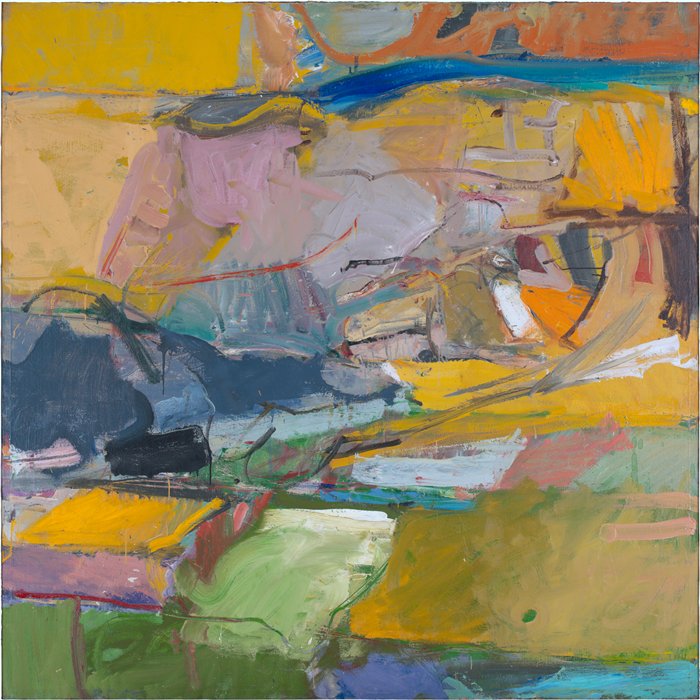
Richard Diebenkorn, Berkeley #57, 1955
Oil on canvas
Courtesy SFMOMA
An acquaintance of mine used to stage an annual Christmas dinner, which was followed by a raucous gift exchange game. Guests were required to bring a wrapped gift, anything with a price tag under $10 (less inflationary times). Numbers were picked from a hat and lucky Guest #1 kicked off the game by selecting a package from the pile. Guest #2 could steal #1’s gift or pick a new one. Guest #3 could steal either of the previously opened gifts or choose a new one. Etcetera, until all gifts were opened and spoken for. Invariably someone would unwrap a package to find a really awful gag gift, at which point the crowd would gleefully crow “YOU’LL BE TAKING THAT HOME!”
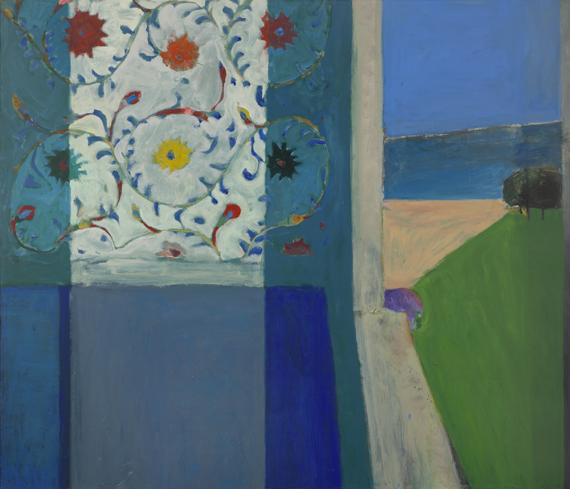
Richard Diebenkorn, Recollections of a Visit to Leningrad, 1965
Oil on canvas
© 2013 The Richard Diebenkorn Foundation
I often play this game while wandering through art exhibits. Or, rather, a version of the game in which I am the only player (stealing from myself as I proceed through the exhibit), who actually DOES want to take that gift home. Such was the case recently as I toured the Richard Diebenkorn: The Berkeley Years 1953-1956 (at the de Young Museum until September 29th).
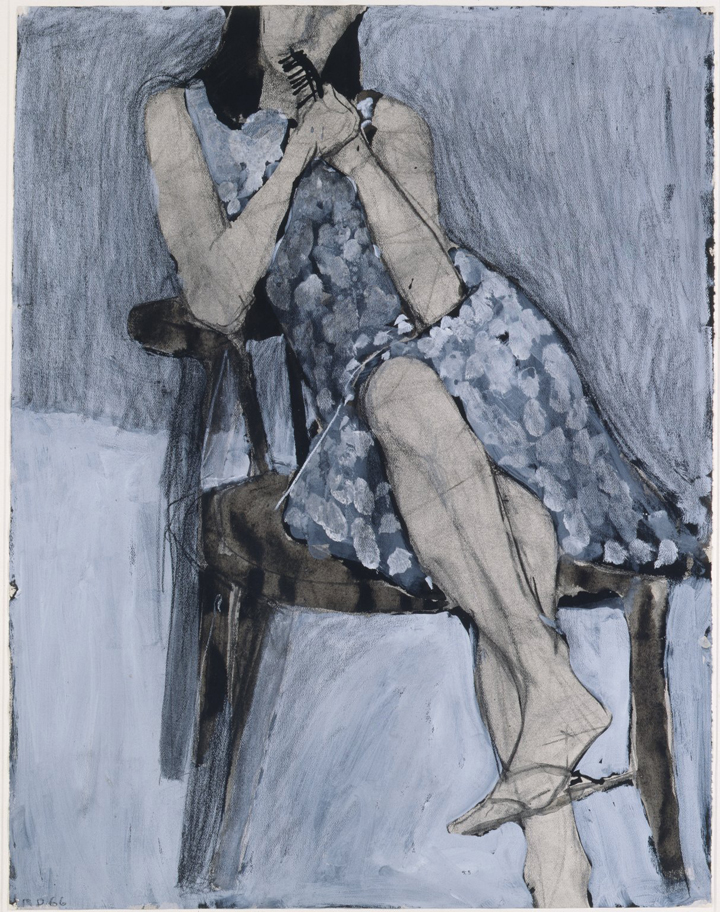
Richard Diebenkorn, Seated Woman No. 44, 1966
Watercolor, charcoal, gouache and crayon
Courtesy Fine Arts Study Collection, University at Albany, State University of New York
“The Berkeley Years” offered many possibilities for my imaginary wall. I admit, the breadth of what was on offer—landscape, figurative, still life, canvas, paper—forced me to cheat a bit. I broke the rules to select multiple gifts.
To me, there is no painter who more evocatively captures the essence of the California landscape. Through a palette that embraces both intensity and subtlety—bright greens and oranges, warm pinks, yellow ochers, cool muted blues, purples, turquoises, and greys—Diebenkorn creates landscapes that evoke the polarity of the Bay Area environment—the intensity of the California sun and that particular quality of our fog, which shrouds but doesn’t always conceal. Pretty much every landscape/abstraction was a candidate for my wall.
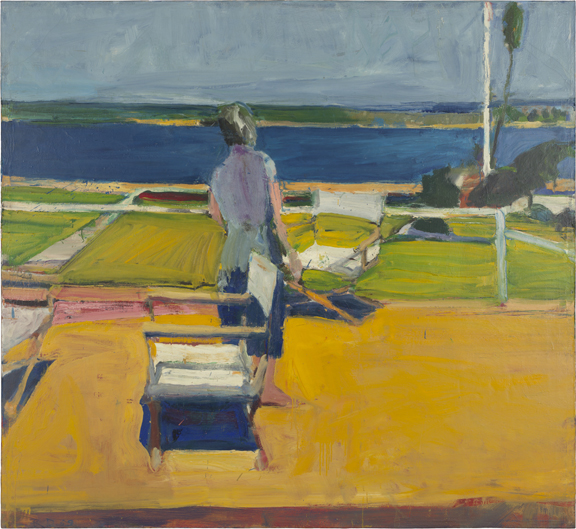
Richard Diebenkorn, Figure on a Porch, 1959
Oil on canvas
(Oakland Museum of Art)
© 2013 The Richard Diebenkorn Foundation.
The figurative work did not resonate as strongly. The second time through the exhibit another artist accompanied me. We both agreed that, for a variety of reasons, many of the figure sketches were downright awkward and, had they been our own pieces, they might have ended up in the trash bin. Still, I appreciated seeing the missteps intermingled with the successes. Diebenkorn was not afraid to try different subjects and styles. Courage, mistakes can be made.
That doesn’t mean that there weren’t some exquisitely elegant figural statements on the walls. I understand the complaint that some critics have about Diebenkorn forcing figures into landscapes; indeed, the more successful works for me focused on either the figure or landscape, and, in the case of the former, my favorites were the intimate works, made with gouache (and and other drawing materials) on paper.
Still, we don’t often get to peek behind the curtain that cloaks the artistic process. “The Berkeley Years” offers an incredible opportunity to observe Diebenkorn’s relentless experimentation with underlying structure, form, line, subjects. The development of his stylistic vocabulary unfolds before us. I found this truly the most exciting aspect of the show.
Which works will I be taking home? Top of the list: Berkeley #57. Its “plate techtonic” structure creates a forceful metaphor of the fault line. Also, Seated Woman, No. 44, for the curve of her calf (even though I’m sure the tibia is in the wrong place) and the simple treatment of the pattern on her dress. (Note to self: simplify patterns!) Figure on a Porch—I’m not bothered by the appearance of a figure, who for me becomes another abstract structural element. And finally, this gem:
Get up close to this study to see the multitude of sensational ways that Diebenkorn uses the paint to create form and substance. See what happens underneath and in between the shapes.
One last ramble: Diebenkorn’s “Notes to myself on beginning a painting”— a good manifesto to live by or a reminder to compile your own list. (Spelling and capitalization his.)
- attempt what is not certain. Certainty may or may not come later. It may then be a valuable delusion.
- The pretty, initial position which falls short of completeness is not to be valued — except as a stimulus for further moves.
- Do search. But in order to find other than what is searched for.
- Use and respond to the initial fresh qualities but consider them absolutely expendable.
- Don’t “discover” a subject — of any kind.
- Somehow don’t be bored — but if you must, use it in action. Use its destructive potential.
- Mistakes can’t be erased but they move you from your present position.
- Keep thinking about Polyanna.
- Tolerate chaos.
- Be careful only in a perverse way.
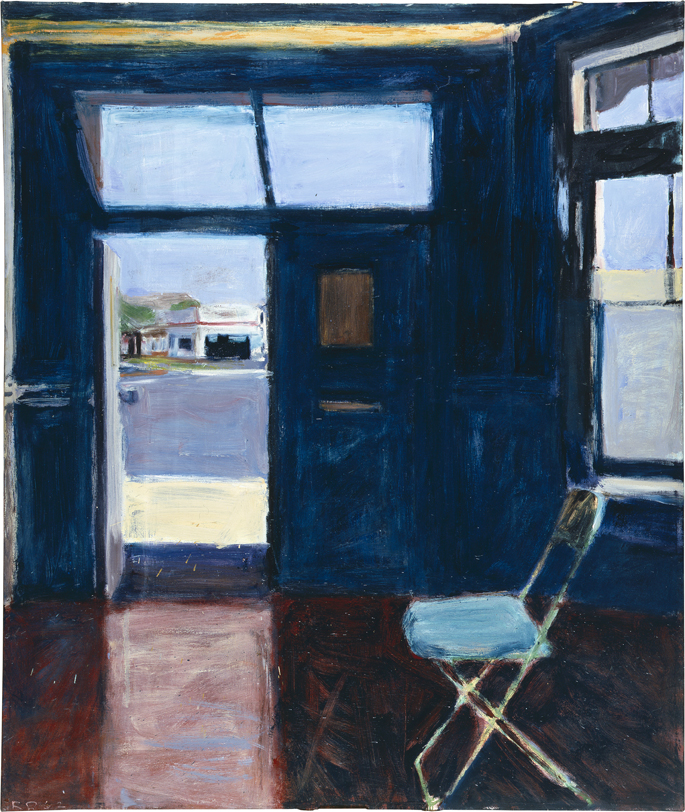
Richard Diebenkorn, Interior with Doorway, 1962
Oil on canvas
(Pennsylvania Academy of the Fine Arts)
© 2013 Richard Diebenkorn Foundation
Down The Rabbit Hole
The Richard Diebenkorn Catalog Raisonné
SF Arts Quarterly—“The Diebenkorn is in the Details”
Catalog—Richard Diebenkorn: The Berkeley Years, 1953-1966 (Fine Arts
Museums of San Francisco)“The Unknown Diebenkorn”—L.A. Times
Grace Glück—“A Painter Unafraid to Change Styles”
More California landscape—Early California Art (blog)
A fantastic plein air pastellist—Bill Cone
Venetian Red Bookshelf: Daily Rituals: How Artists Work
Posted in Artists Speak, Book Review, Fine & Decorative Arts, Liz Hager, Music & Dance with tags Arthur Miller, artist rituals, artists' quotes, Chuck Close, creative routines, Dublin, Edith Sitwell, Francis Bacon, Frida Kahlo, Gustav Mahler, Gustave Flaubert, Henri Matisse, James Joyce, Patricia Highsmith, Philip Roth, Truman Capote, Vladimir Nabokov, William James on June 18, 2013 by Liz HagerBy LIZ HAGER
© Liz Hager, 2013. All Rights Reserved
Recollect that only when habits of order are formed can we advance to really interesting fields of action—and consequently accumulate grain on grain of wilful choice like a very miser—never forgetting how one link dropped undoes indefinite number. —William James
I wish I had a routine for writing. I get up in the morning and I go out to my studio and write. And then I tear it up! That’s the routine really. And then, occasionally, something sticks. The only image I can think of is a man walking around with an iron rod in his hand during a lightning storm. —Arthur Miller
Always struggling to create working discipline in my creative life, I snatched up Mason Curry’s Daily Rituals, hoping to glean a few actionable tidbits this compilation of anecdotes on the working habits of 161 writers, musicians and artists, from Voltaire to Abramović. Culled from Curry’s blog of the name, the book is a fast and entertaining read. Though I wasn’t struck by proverbial lightening bolts while reading, after digesting the book I did formulate one hugely-important overriding maxim for myself. More about that below.
A disclaimer in the book’s introduction sets a modest stage:
“…this is a superficial book… it’s about the circumstances of creative activity, not the product; it deals with manufacturing rather than meaning.”
I suspect the book has been wildly popular precisely because it looks behind the curtain, so to speak, of the creative process. Not exactly a “how to” book, Daily Rituals is nevertheless instructive. In the introduction Curry purports to address (if not answer) the big hairy questions we all ponder:
How do you do meaningful creative work while also earning a living?
Is it better to devote yourself wholly to a project or to set aside a small portion of each day?
When there doesn’t seem to be enough time for all you hope to accomplish, must you give some things up or can you learn to condense activities, to work “smarter”?
Are comfort and creativity incompatible? Or is finding a basic level of daily comfort a prerequisite for sustained creative work?
The book is not organized around these questions (in fact, an organizing principle was not obvious to me), and leaves the reader to his or her own conclusions. Helpful patterns do emerge, however:
Wake Up. Creatives rise around the clock. At one end, rose Proust typically did not get up until 3 or 4 in the afternoon; on the other end,
Balzac rose at 1am.
Work Routine. This category too yielded no regularity. As a visual artist, I was astonished (jealous?) to discover how few hours most of the writers purport to work day, usually just a few hours before noon. Many set word limits for themselves and then, working day completed, went on to the other parts of their lives. (To be fair, many writers held/hold down paying jobs—Trollope, Cornell, Eliot, Joyce.) Some, like Simon de Beauvoir did, work in two shifts, adding an after dinner session to the morning routine. Philip Roth reports all-day work. Conversely, Gertrude Stein habitually wrote only 30 minutes a day. Descartes believed idleness was essential to good mental work. Henry Miller had to switch routines midway through life, realizing that he was a morning person. Francis Bacon’s routine was chaos. One look at his studio, faithfully reproduced in The Hugh Lane Gallery, Dublin, tells you all you need to know.
Bed. A big part of the routine, especially for writers… Proust wrote exclusively in bed, his head propped up by two pillows. Truman Capote always wrote “horizontally.” I particularly relish the image conjured up by James Joyce’s sister of the writer in bed”smothered in his own thoughts.”
Edith Sitwell, who was reputed to have slept in a coffin from time to time (one would have thought that would be Anne Rice’s territory…), also enjoyed her bed. “All women should have a day a week in bed,” she quipped. At the end of one particularly long day working in bed, she observed: “I am honestly so tired that all I can do is lie on my bed with my mouth open.”
Although Frida Kahlo is not included in this book, one is reminded of her lengthy and involuntary stays in bed. So driven to work, she rigged ingenious set ups , which allowed her to paint while nearly immobilized.
Food. For breakfast, coffee or tea, toast and, more often than not, cigarettes. It seems that hardly anyone in the book skipped breakfast or at least the first meal of the day. (Possibly the advice imparted by a recent graduation speaker—”Never start something new on an empty stomach”—is already common wisdom among creatives.) Lunch and dinner are also recorded, mostly as social events with family or friends.
Stimulants. Daily Rituals offers irrefutable confirmation that creatives consume copious amounts of alcohol, occasionally while working. (Or used to, at any rate. Maybe that has all changed in today’s health-conscious world.) Francis Bacon was legendary, living a life of “hedonistic excess, eating many rich meals a day, drinking tremendous quantities of alcohol, taking whatever stimulants were handy, and generally staying out later and partying harder than any of his contemporaries.”
Patricia Highsmithalways downed a stiff drink before starting work, in order to calm her manic energy level. Toulouse-Lautrec was well-known for his nights of binge drinking. That routine probably cost him his life—he died at 36.
Smoking. Many many cigarettes of course, but also cigars (Georges Sand famously; Thomas Mann, continuously), and some pipes. Bathus had a most evocative description of the uses of smoking:
“I’ve always painted while smoking. I am reminded of this habit in photographs from my youth. I intuitively understood that smoking double my faculty of concentration, allowing me to be entirely within a canvas.”
Other habits & diversions: Creative people spend lots and lots of walking. (A body in motion is a powerful ideation tool.) And working at regular income jobs. On the subject of breaks, composer John Adams sensibly says: “The problem is that you do get run out of creative energy and sometimes you want to take a mental break.”
And indulge in your guilty pleasures! PG Wodehouse reportedly never missed an episode of “The Edge of Night” afternoon soap opera.
On the pain and joy of the craft. Writers compete for superlatives on the distress of working. Philip Roth: “Writing isn’t hard work, it’s a nightmare.” Styron similarly complains: “Let’s face it, writing is hell.” Ira Gershwin observed of his brother, George: “To me George was a little sad all the time because he had this compulsion to work. He never relaxed.”
On the other hand, joyful work be yours, if you happen to be a creative Gustave. The Austrian Mahler: “You know that all I desire and demand of life is to feel an urge to work!” The French Flaubert quipped: ” After all, work is still the best way of escaping from life!”
Among visual artists, Matisse was perhaps the most relentless worker, even telling “all sorts of tales” to get his models to work on Sundays. “I can’t sacrifice my Sundays for them just because they have boyfriends.” Matisse had the great fortune to basically enjoy everything. “I am never bored,” he often admitted.
I’m not sure Daily Rituals provides overt answers to the big questions Curry poses at the onset. In the aggregate, its overwhelming message is that creative work, like all work, is often just relentless grind. One has to find the ways to muscle through. On a personal note, I try to live by Chuck Close’s well-known adage: ” Inspiration is for amateurs. The rest of us just show up and get to work.” Amidst our creative toil, who among us has not at times felt Kafka’s lament: “Time is short, my strength is limited, the office is a horror, the apartment is noisy, and if a pleasant straightforward life is not possible then one must try to wriggle through by subtle maneuvers.”
If the 161 anecdotes in Daily Rituals offer any collective wisdom, it is that there is no one way to achieve regular production. That’s permission to engage in whatever habits work best for one’s own creative process, as long as the habit is regular. In a 2005 NY Times article, Michael Kimmelman noted: “Out of routine comes inspiration. That’s the idea, anyway. To grasp what’s exceptional, you first have to know what’s routine.”
Find a process and trust it.
The Rabbit Hole
Twyla Tharpe—The Creative Habit: Learn It and Use It for Life
More Artist Routines—How We Work
John Deakin: Photographs
Eric Fishl—Bad Boy: My Life On and Off the Canvas
NY Foundation for the Arts—”Ten Habits of Successful Artists“
Time Waits For No One: Christian Marclay’s The Clock at SFMOMA
Posted in Bay Area Art Scene, Collage & Photomontage, Contemporary Art, Digital, Film & Video, Fine & Decorative Arts, Liz Hager with tags Christian Marclay, Ronald Reagan, SFMOMA, The Clock, Zadie Smith on April 7, 2013 by Liz HagerBy LIZ HAGER
© Liz Hager, 2013. All Rights Reserved
Harold Lloyd, still from Safety Last.
Do not wait to see Christian Marclay’s The Clock at SFMOMA. Its limited screening ends June 2, when the Museum will close its main building for a 3-year expansion project to accommodate the Fisher collection.
Marclay’s 24-hour digitized film montage, fabricated from film and TV clips, unfolds in an endless loop in real time. Each moment in the piece is marked is marked by a visual timepiece or announcement of time, simultaneous to actual time. The gargantuan effort required to assemble at least 1440 shots culled from incalculable hours of footage is mind-boggling. (The OED effort springs to mind.) Marclay did not stop at these clips. In a feat of virtuosic visual and sound editing, the artist wove the marked moments together with other, non time-specific, footage. The resulting 86,400 seconds is an unforgettable experience.
Like all truly impressive works of art, The Clock is both instantly accessible and unfathomably deep. The film clips are a seductive conceit; for the first while a viewer engages in an entertaining game of recognizing actors/tresses and identifying movie scenes. Over longer chunks of time, the rhythmic ebb and flow of the piece becomes apparent. Countless themes emerge, recede, re-emerge. Viewers see glimpses of a bigger message, while individual characters fall into the background.
The Clock is strewn with clichés about time. In my 2+ hour segment a lot seemed to happen in the nick of time. Numerous scenes related to various interpretations of hard time. Time never stands still, and Clock people sure were frustrated by that. On a lighter note, I chuckled at the innuendo embedded in a brief scene depicting a character on a plane consulting his watch. Time flies! Time is all-pervasive and language reflects our (at best) contradictory relationship to time. But this is only an ancillary message of The Clock.
Christian Marclay discusses The Clock, 4/3/13
In its 24 hours The Clock captures a microcosm of the human experience, or at least a particular distillation of that microcosm as recorded by filmmakers. While I look forward to chancing upon a moment of birth in the work (no spoilers please!), most other activities that constitute a human life—sleeping, eating, working, plotting & scheming, driving & riding, walking & running, sex, death—seem to have been recorded here over and over in the variation that different clips provide. And yet those 1440+ shots of punctuated time underscore an important message of The Clock—i.e. life is repetitive.
Emotions are The Clock’s underpinning. Bliss. Curiosity. Mirth. Loyalty. Anger. Love. Anticipation. Fear. If emotions are the core of the work, then existential anxiety is its molten center. This is where the film’s monumental power lies. You won’t have to watch for too long before you feel gripped on a visceral level by the anxiety that comes with marking the inexorable passage of time. After a longer while, you may even start to notice moments of anxiety. Your own life is passing. Tick, tick, tick. No, please, make it stop! Paradoxically, you won’t be asking yourself if there is more exciting way to spend that moment.
In this age of point and click consumption of art, the most important thing about The Clock may well be its “stickiness.” It’s a fair guess that most people will spend exponentially more time in the presence of The Clock than they ever have or might with another work of contemporary art. Marclay has discouraged viewing all 24-hours in one sitting, although I’m sure that hasn’t stopped people from trying. Ronald Reagan’s character (from The Killers) sums it up best at 1:20pm— “If you want in, you’re in all the way.”
Wider Connections
Daniel Zalewski’s Marclay profile in The New Yorker
Alain de Botton speaks with Christian Marclay
YouTube excerpt—Marclay’s Chalkboard
Max Weintraub on The Clock
Zadie Smith (NY Review of Books): “Killing Orson Welles at Midnight”
